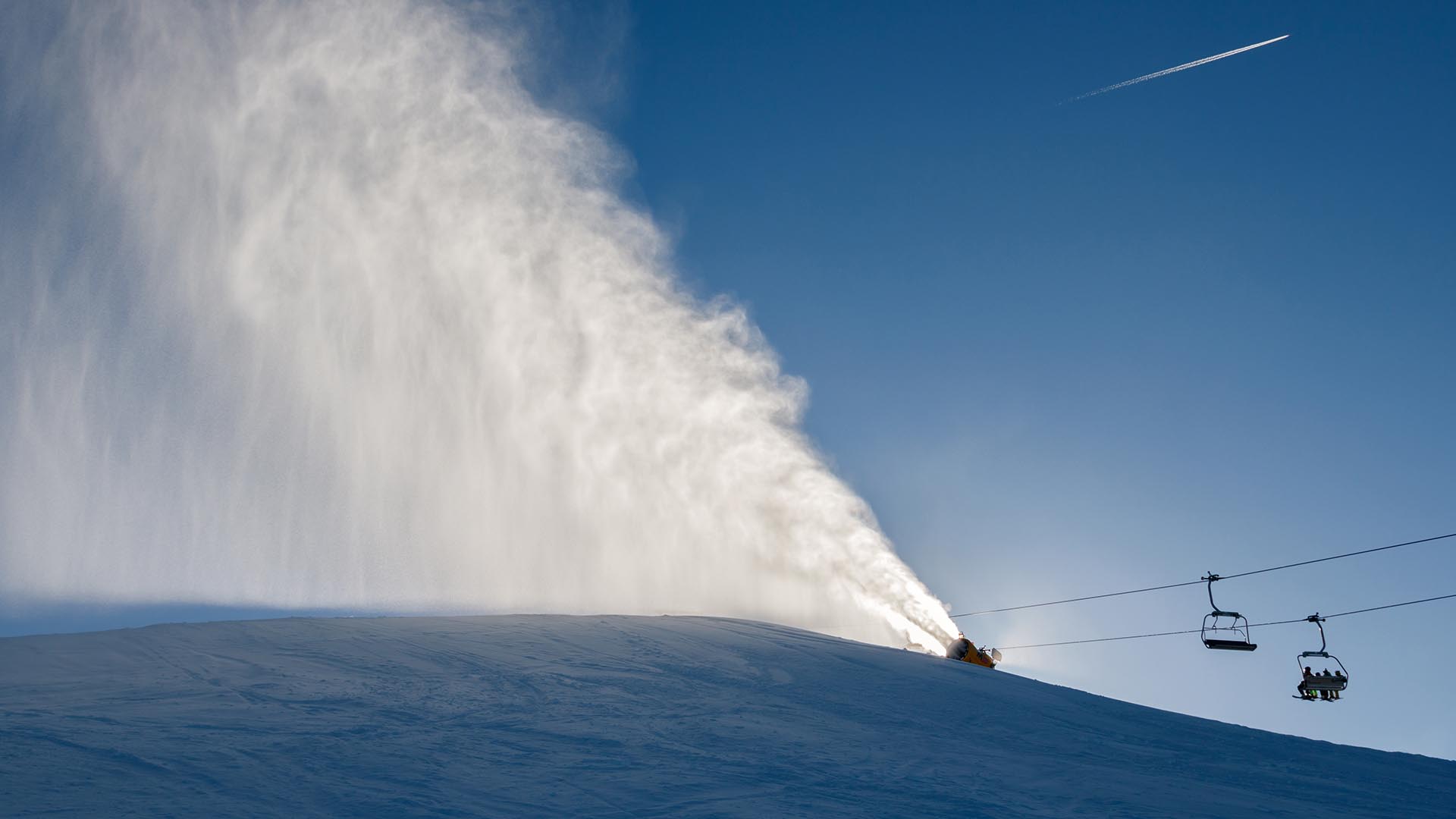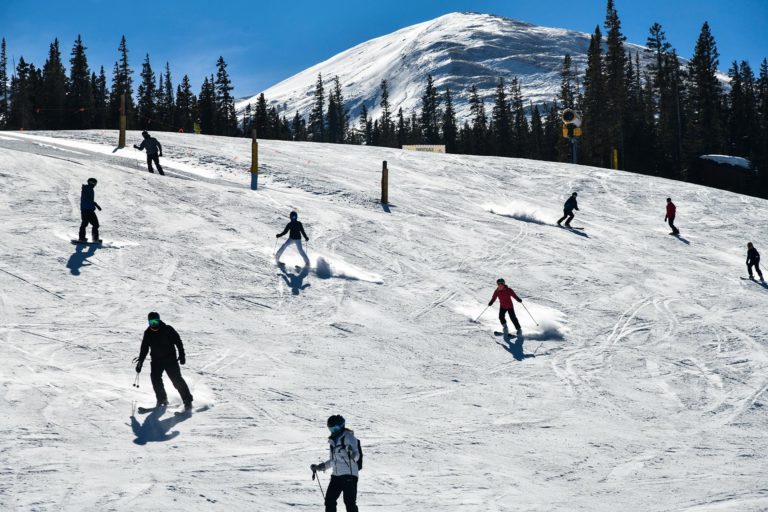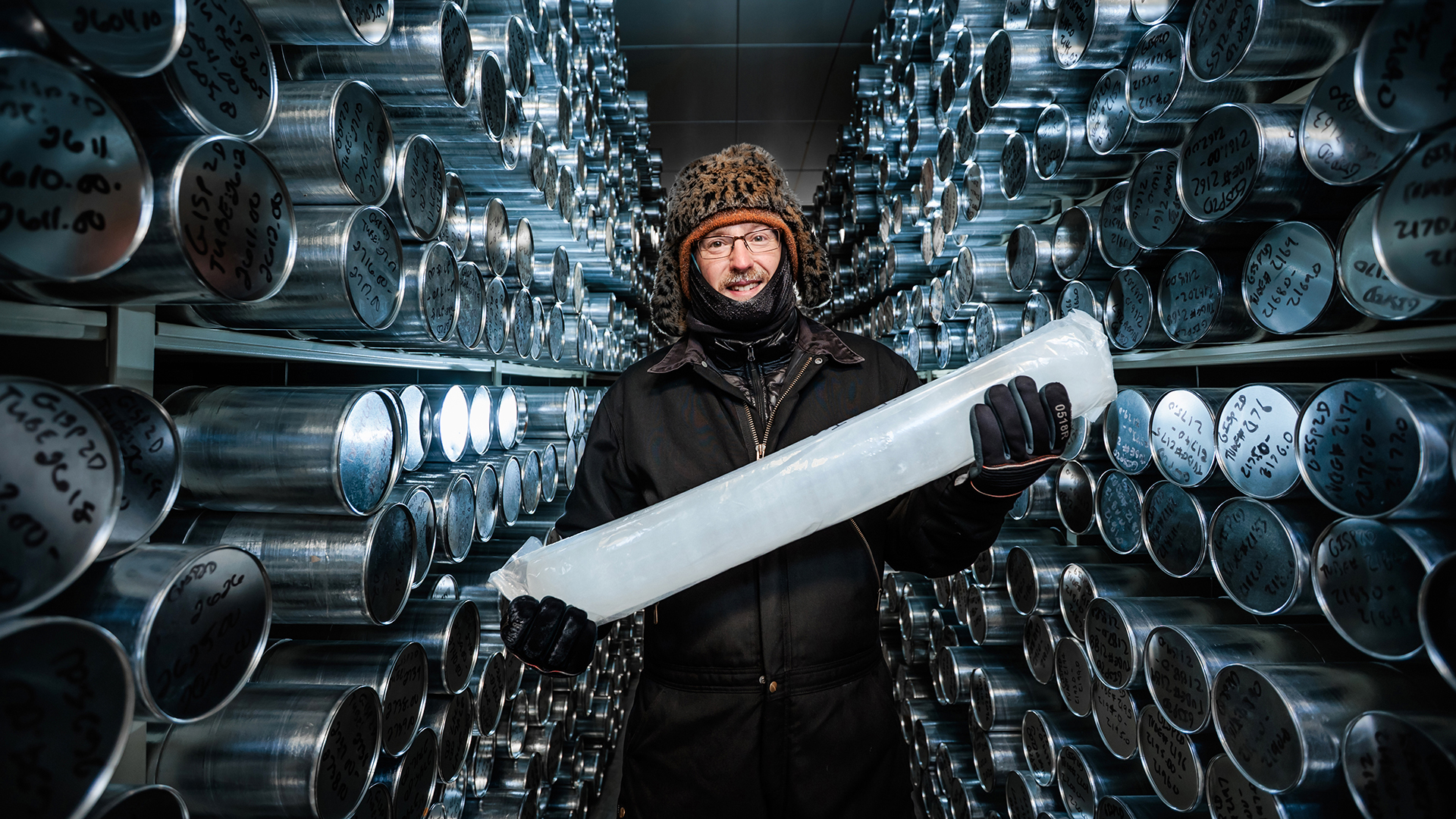Snowmaking stretches ski season. But is it sustainable?
Colorado’s ski-and-snowboard industry fights to mitigate the consequences of climate change while boosting the state’s economy.

It’s the first rule of skiing and riding: You need snow.
And when Mother Nature is stingy in providing the white stuff, Colorado’s ski-and-snowboard industry ramps up its efforts to lend her an icy helping hand.
Arapahoe Basin opened Oct. 23 this year, with several other resorts following suit a few days later. Winter Park had the earliest opening day in its 83-year history despite the fact that it has seen less natural snowfall this year than last.
It’s all thanks to the resorts’ extensive snowmaking operations, where water and pressurized air are used to create artificial snow. Recent advances in snowmaking technology, coupled with some major investments in state-of-the-art equipment, often send ski-and-snowboard season off to a flying start before Halloween.
That’s great for Colorado’s outdoor industry, which generated $11.6 billion in economic activity in 2021, said Lincoln Davie, Ph.D., associate professor of Outdoor Recreation in Metropolitan State University of Denver’s School of Hospitality. Snow activities alone generated $1.3 billion in Colorado, which ranked first in the nation.
“The ski industry remains our most robust outdoor market,” Davie said, “and there’s an expectation that adventure tourism will bring in more than $1 trillion globally by 2030. So yes, you could say getting a steady supply of snow is pretty critical.”
RELATED: Snow worries
But maintaining that steady supply to sustain a crucial sector of the state’s economy is also a balancing act. Snowmaking at Colorado ski resorts annually diverts around 1.5 billion gallons of water and uses a lot of energy, all while the state endures a crippling 23-year drought and an accelerating climate crisis.
“It’s a difficult situation, certainly” said Tom Bellinger, Ph.D., an affiliate professor of Environmental Science at MSU Denver. “Although it does help that winter recreation occurs during the ‘recharge season’ of the water year, when there’s generally less demand for irrigation, plants and crops.”

But the situation remains fragile, he warned. A string of dry winters could easily lead to a sparse mountain snow covering, resulting in a limited water supply to fill the state’s reservoirs.
“That would be a double whammy for tourism,” Bellinger said. “If you had not enough mountain snow when resorts needed it most — plus a lack of available snowmaking water — you’d likely be looking at shorter snow seasons.”
‘Stretchy’ season
There’s good reason why the ski industry is investing so heavily in man-made snow. Snowpack in the U.S. West fell by nearly 20% during the last century, according to an analysis by the Environmental Protection Agency. And as natural snow progressively arrives later and melts earlier, snowmaking has provided a means to artificially “stretch” the skiing season — in both directions.
Besides enabling record early starts this year, man-made snow has been lengthening the ski season in recent years. That’s why snowmaking is critical to the industry’s bottom line and the 46,000 year-round jobs that depend on it, Davie said.
“Without reliable snow all season long, all those other highly profitable elements of the resort experience — guest ski passes, lodging, food and drink, even parking — simply would not happen,” he said.

Snowmaking first started to gain traction around 50 years ago and has become almost ubiquitous. The National Ski Areas Association estimates that around 87% of the country’s ski resorts use snowmaking equipment.
Still, you can’t say they’ve been napping through the climate crisis. In recent years, the multibillion-dollar industry has invested heavily to make snowmaking technology more energy-efficient and environmentally conscious.
Numerous resorts have replaced their manual snow guns with fully automatic models. Fitted with onboard weather systems, these complex machines “read” forecasts and switch on only when the temperature is suitably cold and crisp. The result: more snow with less water.
Crucially, resort operators have also gotten better at utilizing another valuable resource: experience. Davie argues that decades of trial and error have made ski specialists more strategically savvy about what does and doesn’t work, and better at managing risks.
“These days, resorts know precisely where to position snow guns to maximize cover, and they carefully scrutinize weather forecasts,” he said. “It’s a finely honed operation.”
Sustainable skiing
While the 1.5 billion gallons of water used annually in Colorado snowmaking sounds like a giant number, it’s a tiny amount — a thimbleful of water in a great lake — compared with the vast reserves (85% of Colorado’s total water allowance) set aside each year for agricultural use.
And most of this man-made snow, around 80%, eventually melts and returns to the watershed during the spring.
“Last season, Winter Park took around 72 million gallons from the Vasquez Canal for its snowmaking operations,” Bellinger said. “But most of that water, excepting 20% lost to evaporation, returned right back to the canal during the melt season.”
In other words, the ski resorts are largely “borrowing” the water rather than outright taking it.
RELATED: Water crisis sinks to new level
Colorado’s ski industry is also fighting to mitigate its impacts and implement progressive environmental strategies.
“The outdoor industry has really led the way in demonstrating that business can’t be relevant without a deep integration of sustainability principles,” Davie said.
As an example, he pointed to Vail Resorts, a massive company that employs thousands but nonetheless is on track to achieve a zero net operating footprint by 2030. Other ski areas have also set similar goals through aggressive sustainability plans.
“That’s the kind of progress I’d like to see across the board,” Davie said. “If more industries could follow Vail’s example and commit to such ambitious environmental targets, it might give us a fighting chance.”







